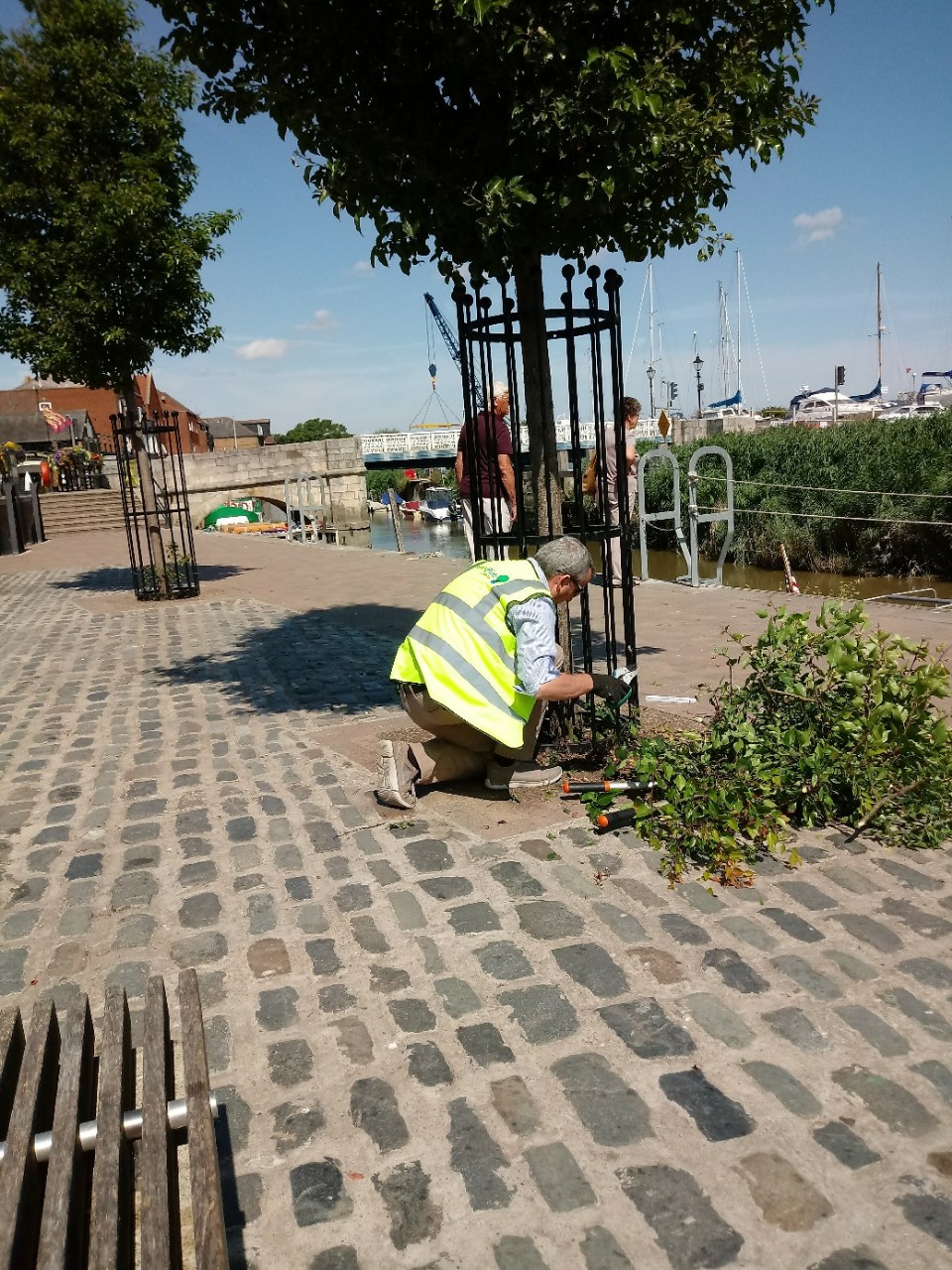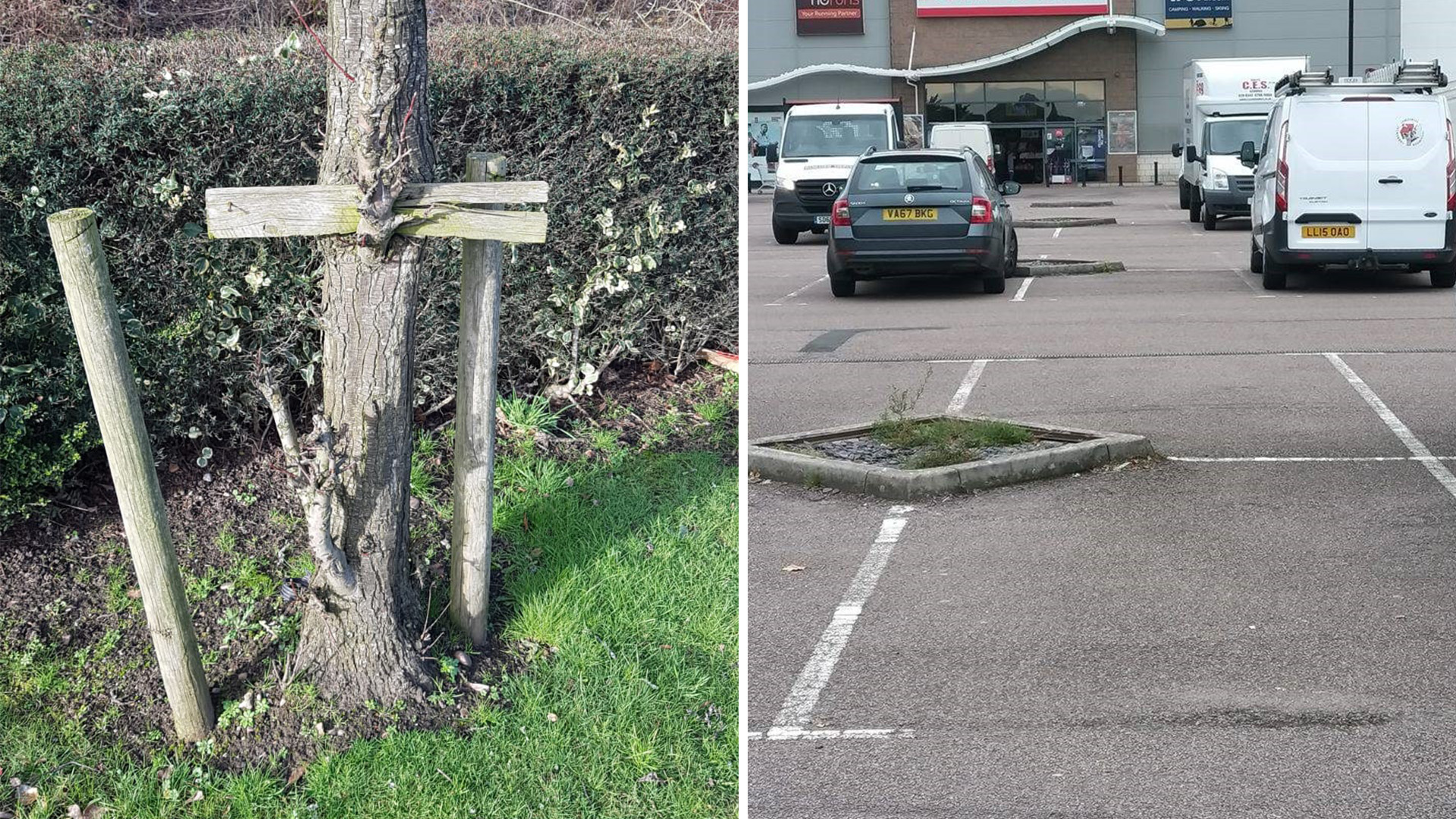Χρήση συστημάτων Bιώσιμης Aποστράγγισης (χαμηλού αντίκτυπου) σε Λάκκους δέντρων για φιλτράρισμα των
μικροπλαστικών.
Οι ρύποι της αστικής
απορροής που φτάνουν στους ωκεανούς αποτελούν πρόβλημα παγκόσμιας εμβέλειας.
Ακόμα και οι πιο απομακρυσμένες περιοχές του πλανήτη ξεβράζουν υπολείμματα από
απορρίμματα, μεταφέροντάς τα σε αποστάσεις πολλών μιλίων, προτού κατατεθούν σε
μακρινές παραλίες. Το ερώτημα όμως είναι, τι γίνεται με τους ρύπους που δεν
ξεπλένονται.
Ορισμένα από αυτά
τα στοιχεία, διασπώνται φυσικά και άλλα χημικά, ενώ οι υδρογονάνθρακες σε ένα μόνο
μικρό ποσοστό διασπώνται από βακτήρια και ηλιακό φως. Τα σωματίδια με βάρος
μεγαλύτερο του νερού τείνουν να καθιζάνουν ως ίζημα στον πάτο των θαλασσών και
των υδατορευμάτων και τότε είναι που το πρόβλημα ξεκινά.
Όταν οι ρύποι
βρίσκονται σε κατάσταση αδράνειας δεν παρουσιάζεται κίνδυνος, όταν όμως οι
έντονες βροχοπτώσεις και οι καταιγίδες τους απελευθερώνουν εισέρχονται στην
τροφική αλυσίδα. Η απορροή υδάτων όταν γίνεται από τα αγροκτήματα είναι ικανή να προκαλέσει προβλήματα όπως
άνθηση φυκών, μη οξυγονωμένο νερό και άρα απώλεια ζωής οργανισμών με τα νιτρικά
και την ιλύ που εισέρχονται στα υδάτινα ρεύματα, αλλα είναι περιορισμένη σε συγκεκριμένες υδάτινές οδούς
Πιο συγκεκριμένα,
μικροπλαστικά που βρίσκονται σε διάφορα μεγέθη, μικρότερα των 5 mm έχουν βρεθεί σε ψάρια σε όλο τον κόσμο.
Σημαντικό είναι ωστόσο, ότι ενώ το αποτέλεσμα αυτού του οικολογικού προβλήματος
δεν έχει κατανοηθεί πλήρως, κατηγορείται για καργκινογεννέσεις. Πανεπιστημιακές
έρευνες έχουν επίσης δείξει ότι τα μικροπλαστικά υπάρχουν τόσο στα ανάντη, όσο
και στα κατάντη των εγκαταστάσεων επεξεργασίας λυμάτων, φανερώνοντας έτσι τους
ποικίλους τρόπους εισροής στα ποτάμια. Τα εργοστάσια επεξεργασίας λυμάτων δεν
έχουν σημαντικό ιστορικό αφαίρεσης των μικρότερων πλαστικών σωματιδίων. Έτσι, παρότι
ορισμένοι ισχυρίζονται ποσοστά αφαίρεσης έως και 98%, τεράστιες ποσότητες
πλαστικών συνεχίζουν να απορρίπτονται σε ποτάμια και ρυάκια.
 |
| Kenmont Gardens, Κήπος βροχής SuDS με stratacell |
Πρωτεύοντα και δευτερεύοντα.
Τα πρωτεύοντα
μικροπλαστικά είναι είτε προαιρετικές προσθήκες σε προϊόντα όπως τριμμένα σωματίδια σε καθαριστικά, τζελ και
καλλυντικά, ή από τη φθορά ή την απόξεση μεγαλύτερων αντικειμένων όπως φθορά
ελαστικών, σκόνη απόξεσης από την κατασκευή ή απελευθέρωση ινών κατά το πλύσιμο
των ρούχων.
Τα δευτερεύοντα μικροπλαστικά προέρχονται από την αποικοδόμηση
μεγαλύτερων αντικειμένων λόγω καιρού, φωτοαποικοδόμησης και άλλων
περιβαλλοντικών διαδικασιών. Συχνά, αυτές οι διεργασίες συμβαίνουν στη θάλασσα
και περιλαμβάνουν τις απώλειες των διχτυών του ψαρέματος, τις απορριφθείσες
πλαστικές σακούλες και τα μπουκάλια και άλλα πλαστικάθραύσματα.
Οι δύο
μεγαλύτερες πηγές χερσαίων μικροπλαστικών είναι η φθορά των ελαστικών
αυτοκινήτων και το ξέπλυμα των συνθετικών υλικών. Αυτά τα δύο μέρη αποτελούν
έως και το 70% όλων των πρωτευόντων μικροπλαστικών στα υδάτινα ρεύματά μας. Η
ένδειξη για να σταματήσουμε αυτούς τους μικρούς ρύπους να ταξιδεύουν
περισσότερο είναι να προσπαθήσουμε να τα πιάσουμε στην πηγή.
“ Τουλάχιστον 10
μελέτες από το 2014 από ακαδημαϊκούς και περιβαλλοντικούς συμβούλους αναφέρουν
σωματίδια που δημιουργούνται από τριβή μεταξύ των ελαστικών και του δρόμου ως
μία από τις μεγαλύτερες πηγές μικροπλαστικών - θραύσματα μήκους κάτω των πέντε
χιλιοστών - που απελευθερώνονται στο περιβάλλον”.
Τα βιώσιμα
συστήματα αποχέτευσης SuDS έχει αποδειχθεί ότι είναι αποτελεσματικά στη σύλληψη
αυτών των μικροσκοπικών πλαστικών τεμαχίων και η συγκράτηση αυτών σε αδράνεια,
σε ένα υγιές έδαφος με καλή ανάπτυξη φυτών είναι μια οικονομικά αποδοτική
επιλογή. Στο δήμο του Χάμερσμιθ και στο Φούλαμ του Λονδίνου, ορισμένες
εγκαταστάσεις μετασκευής Green Blue Urban ArborFlow έχουν εγκατασταθεί σε αστικούς
δρόμους για να καθαρίσουν την απορροή πριν προχωρήσει περαιτέρω τους ρύπους. Με την πάροδο του χρόνου, το
φαινόμενο φιλτραρίσματος από τα φυτά φαίνεται να είναι μεγαλύτερο - η
συμβιωτική σχέση μεταξύ των ριζών και της μικροβιολογικής δραστηριότητας κάτω από
το έδαφος λειτουργεί 24/7 για τον καθαρισμό και το φιλτράρισμα της απορροής για
όλη την ανθρωπότητα. Οι τρέχουσες έρευνες δείχνουν ποσοστό απομάκρυνσης
μικροπλαστικών άνω του 95%, αλλά η έρευνα συνεχίζεται.
 |
| RootSpace SuDS συστημα σε λάκκους φυτευσης . North Street, Keighley |
Μακροπρόθεσμα,
πρέπει να μειώσουμε την εξάρτησή μας από αυτά τα υλικά. Τα ελαστικά των
οχημάτων πρέπει να επανασχεδιαστούν έτσι ώστε να χρησιμοποιείται περισσότερο φυσικό καουτσούκ και όλοι πρέπει
να εξετάσουμε εάν είναι βιώσιμο να ντυνόμαστε με συνθετικά υλικά.
Μεταφραση : Καλλιόπη Δουρούκη - Αναστασία Χρήστου
Utilizing SuDS/LID Tree Pits for Micoplastic Filtration
Pollutants from our urban runoff reaching our oceans is becoming a global problem. Even the most remote areas of the world are seeing washed up detritus – much travelling thousands of miles before being deposited on far away beaches. But what about the pollutants that don’t get washed up?
Some of these elements break down naturally; certain chemicals and hydrocarbons are broken down by bacteria and sunlight, but many do not. Heavier than water particles tend to settle into the sediment at the bottom of our seas and watercourses. The problems then begin.
If these pollutants stayed in the sediment as inert, that might not be a worry, but when these become liberated by storms or heavy rainfall, these free pollutants can enter the food chain. Whilst farm runoff can bring issues with nitrates and slurry entering watercourses, which can cause various problems including algal bloom, unoxygenated water and thus a loss of water life, these are normally limited to inland waterways.
In particular, microplastics (which are found in various sizes but all less than 5mm in size) have been found present in fish all over the world. Whilst the full implication of this is yet to be fully understood, it is thought that these plastics could be carcinogenic. Extensive research by universities has showed that microplastics are present both upstream and downstream of wastewater treatment plants, indicating that there are various ways in which these are entering our rivers. Water treatment plants don’t have a great track record of removing the smallest plastic particles, although some claim a removal rate of up to 98%, this still leaves huge amounts of plastics being discarded into rivers and streams.
 |
| Kenmont Gardens, SrataCell SuDS Raingarden |
The two largest sources of land based microplastics are car tire wear and the laundering of synthetic materials; these two elements make up to 70% of all primary microplastics in our watercourses. The clue to stopping these small pollutants travelling further is to attempt to catch them at source.
At least 10 studies since 2014 by academics and environmental consultancies cite particles generated by friction between tires and the road as one of the biggest sources of microplastics – fragments less than five millimetres long – being released into the environment.
 |
Sustainable drainage systems have been shown to be effective at capturing these tiny pieces of plastic and holding these inert in a healthy soil with good plant growth is a cost-effective option. In the London Borough of Hammersmith and Fulham, some retrofit GreenBlue Urban ArborFlow tree pit installations have been fitted in urban streets cleaning up the runoff before it takes the pollutants any further. As the plants become more established, the filtration effect seems to be greater – the symbiotic relationship between the plant roots and the below ground microbiological activity working 24/7 to cleanse and filter the runoff for all humanity. Current investigations are indicating a microplastic removal rate of in excess of 95%, but research is continuing.
 |
| RootSpace SuDS tree pit system Installation. North Street, Keighley |
πηγη:https://greenblue.com/gb/utilizing-suds-lid-tree-pits-for-micoplastic-filtration/
Αναλογα άρθρα :













